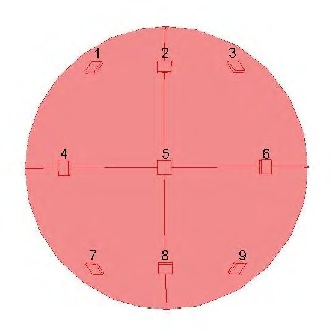
Last month was Breast Cancer Awareness Month (BCAM). In many parts of the world walks were coordinated to fundraise for breast cancer research, and here in the U.S. it also meant NFL football players donned pink gear throughout the month. It was only fitting then, that a poster was presented on the topic at our conference in Boston. The research presented there explores a new method for detecting breast tumors.
Mammograms for Breast Cancer Detection
You’re likely to associate breast cancer detection with mammography. With good reason; mammograms are commonly used to both screen for and diagnose cancer. Although this particular screening method is effective in detecting breast cancer, it does also bring with it potential risks. These include false-negative and false-positive results, overdiagnosis, overtreatment, and exposure to radiation.
According to the National Cancer Institute at the National Institutes of Health, mammograms used for screening purposes have a margin of error of about 20%. These cases fall into the false-negative category. This type of error is typically associated with high breast density. The denser fibroglandular tissue present in younger women’s breasts has similar density to cancer tumors. In terms of mammography, this means that a tumor in a younger woman may be mistaken for healthy tissue, resulting in a false-negative. The opposite scenario can also occur, leading to a false-positive.
Microwave Imaging, a New Method for Detecting Breast Cancer
The abovementioned risks related to mammography are the basis for the research conducted by Aleksandar Jeremic and Elham Khosrowshahli of McMaster University. In their paper “Bayesian Estimation of Tumours in Breasts Using Microwave Imaging” they mention an additional spoke in the wheel of mammography tumor detection. The authors suggest that false-positives can stem from the fact that 3D images are reconstructed from the 2D projections obtained via mammography.
This is why they are supporting the use of a microwave imaging technique in addition to mammograms. Microwave imaging has the potential to transcend in the areas where mammograms come up short. How? A 3D scan can be obtained by placing transmitting and receiving antennas on the breast and then illuminating it from many directions using microwave range electromagnetic waves. As outlined in Jeremic and Khosrowshahli’s paper, the wave propagation in the breast contains scatterers of both healthy and malignant tissue, where malignant tissue has larger conductivity. The waves can then be analyzed to determine whether one, many, or no tumor is present.

Model of the breast as a sphere with a 100mm radius. The numbers correspond with positions of nine receiving antennas. A transmitter antenna is located on the back of the sphere (not shown here).
To read more about their fascinating research, I suggest downloading their paper and poster.



Comments (0)